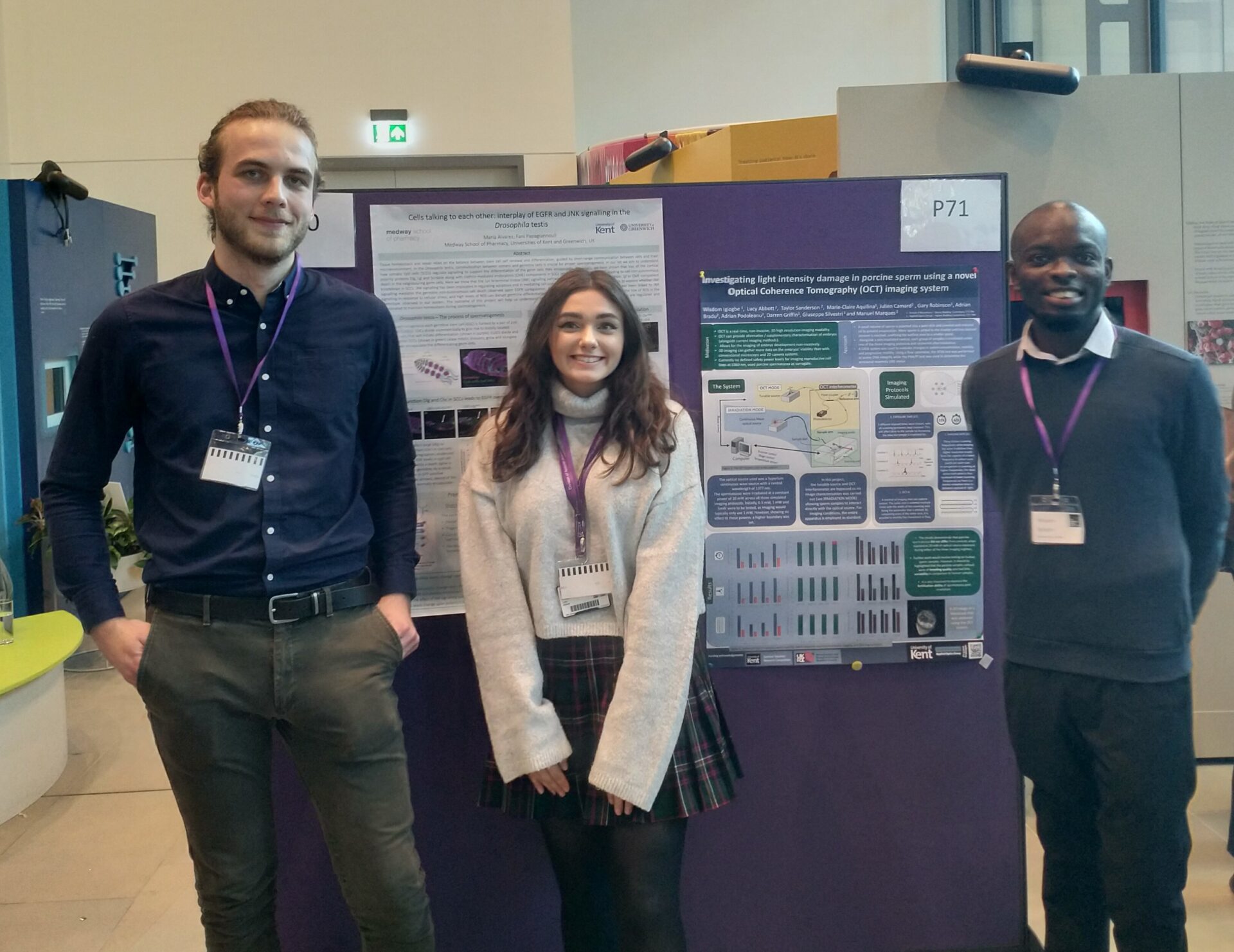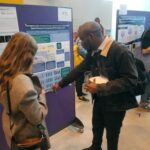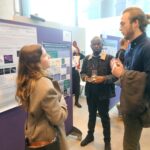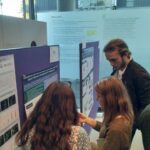
by Lucy Abbott
The Developmental Biology Symposium was held in London on the 9th and 10th of October in honour of Rosa Beddington FRS (1956-2001). Rosa Beddington was a leading embryologist and many of the speakers at the event either held their own memories of her or were continuing work inspired by her research.
The symposium was attended by members of both AOG and School of Biosciences, including Dr Manuel Marques (Lecturer in Physics), Julien Camard (AOG Postdoctoral Researcher), Wisdom Igiogbe (Biosciences undergraduate currently undertaking year in industry), Taylor Sanderson (4th year Physics student) and Lucy Abbott (AOG PhD student). The opportunity stemmed from the Summer Vacation Research Competition held by the University, which Dr Marques and Dr Giuseppe Silvestri (From the school of Biosciences) were awarded for the collaborative project: “Investigating light intensity damage in porcine sperm using a novel Optical Coherence Tomography (OCT) imaging system”. The funding allowed them to hire three undergraduate students and covered the cost for the students and their supervisors to attend the symposium.
The students produced a research poster which was displayed at the symposium throughout the event where they were asked questions and were able to talk through the research and results to other attendees. The talks at the symposium were held over multiple sessions, mostly around the field of understanding embryos and studying development within living organisms at their earliest stages. There was a notable talk for the AOG attendees given by Professor Jan Huiskin from University of Göttingen on Light Sheet Microscopy, which showed incredible images of acquired by custom microscopy builds.
There was also opportunity to speak to sponsors of the event, such as ThermoFisher Scientific, who gave a short demonstration to the attendees on software available for processing imaging volumes acquired across different modalities including OCT.
The event was a great experience and allowed for a lot of perspective on what can be achieved with various imaging modalities for developmental biology research as well as new information on the biological mechanisms themselves and what is still being discovered.


